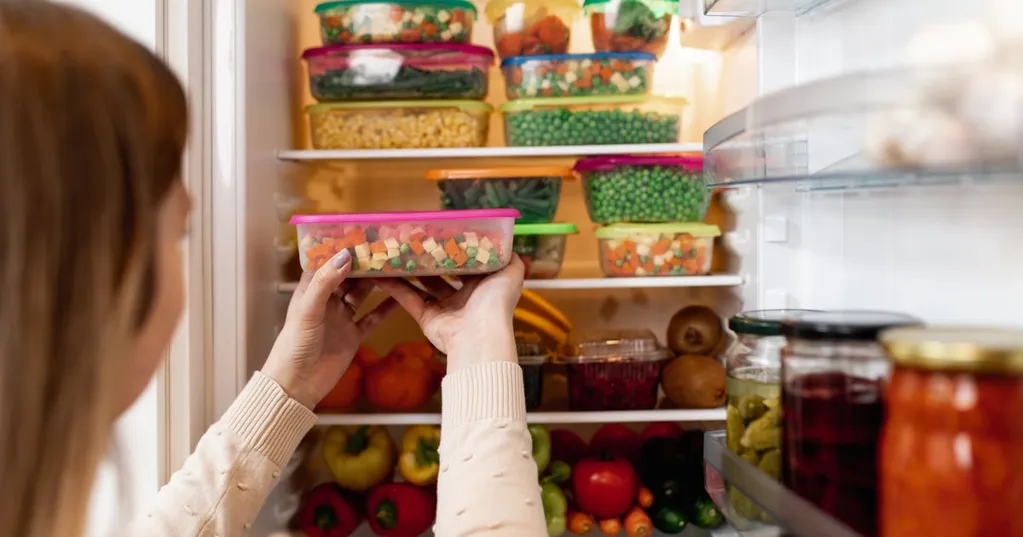After a few too many enthusiastic Costco runs (beef was on sale!) and a particularly bountiful farmers market haul, my fridge was packed to the brim. I didn't think much of it until I noticed my salad greens were freezing solid. And no, they weren't anywhere near the freezer compartment.
It wasn't just the greens. A container of leftovers I'd tucked away days earlier had already gone bad, too. I was ready to call a repairman -- or worse, start pricing out a whole new fridge -- when I reached out to a few food scientists for answers.
The verdict? I wasn't dealing with a broken appliance at all. The real problem was how I was using it. Overstuffing the fridge was likely to blame.
"When a fridge is overloaded, vents become blocked, consequently restricting airflow and causing the internal temperature to rise and become uneven," explained Bryan Quoc Le, a food scientist, food industry consultant, and author of "150 Food Science Questions Answered."
Put simply, having too much food has always been a positive in my Ukrainian household; however, in my refrigerator, it was a danger.
"Air should be able to flow around the food, ensuring that items placed inside cool quickly and remain cool," said Keith R. Schneider, professor of food safety at the University of Florida, in Gainesville, Florida."If the refrigerator is overstuffed, this airflow can be blocked, allowing for 'hot spots' to form."
Like a club that ignores occupancy limits, an overstuffed fridge heats up fast. The cool air can't circulate, and before long, you've got a sweaty, overcrowded appliance. Gross, right? Now let's get into the science.
Your lasagna from last night is only safe to eat again if the fridge keeps it at a temperature below 40°F. However, if the fridge isn't maintaining a cool temperature, your food can enter the dreaded danger zone.
"Warmer spots in the fridge create danger zones, or temperatures between 40°F and 140°F at which bacterial growth is rapid, spoiling the food, and can cause food poisoning when consumed," Le explained.
Those warm pockets tend to form in the door shelves and back corners -- the very places many of us stash eggs, milk or leftovers. That's where food is most likely to creep out of the safe zone.
"Likely to warm foods include ready-to-eat foods (deli meats, leftovers, cut fruit), eggs and dairy stored far from vents are most vulnerable," Darin Detwiler, professor of food policy at Northeastern University, said. "Warming can encourage bacterial growth, especially in high-protein, moist foods. While warming increases the risk of pathogens like Listeria monocytogenes, Salmonella, and E. coli."
And counterintuitively, your fridge can go the other way, too -- freezing groceries that were never meant to be frozen. While not as dangerous as food creeping past the danger zone, it still wrecks your groceries.
"Fresh produce, including lettuce, berries, herbs, dairy products, and liquids, can be damaged, making foods spoil faster after thawing," Detwiler said.Translation: say goodbye to those delicate baby greens.
Whether it's freezing your mixed mesclun or keeping last night's leftovers at a balmy 45°F, cramming too much into the fridge can wreck your groceries, and in this economy, no one wants to throw food (or money) away.
Detweiler says these warning signs mean your fridge is working overtime:
When I finally looked at the tiny built-in thermometer at the top of my fridge -- something I'd been happily ignoring -- it was hovering in the danger zone. My stomach dropped.
If you've also been ignoring yours, you're not alone. But as Schneider pointed out, that little readout only tells part of the story.
"Most refrigerators have a digital thermometer that shows a temperature at one location,"he explained.
"If you buy an inexpensive thermometer you can place in several locations to determine the warm spots."
Another simple fix? Don't overstuff. According to Detweiler, keeping your fridge about two-thirds full is the sweet spot. Too little food makes the fridge work harder to stay cold, while too much blocks vents and disrupts airflow.
Where you store things matters, too. Dairy, eggs and other ready-to-eat foods are best kept on the middle shelves, where temperatures are most stable -- not in the door (where it warms every time you open it) or in the back corners (prime territory for those hot and cold pockets).
And while I'd love to say I'm on top of this one, even my Virgo tendencies can't keep my fridge perfectly organized. Detweiler recommends arranging food so older items are eaten first -- "first in, first out" -- to cut down on waste and reduce safety risks. Maybe one day I'll live up to my sign. Until then, it's still fridge Jenga in my kitchen.
